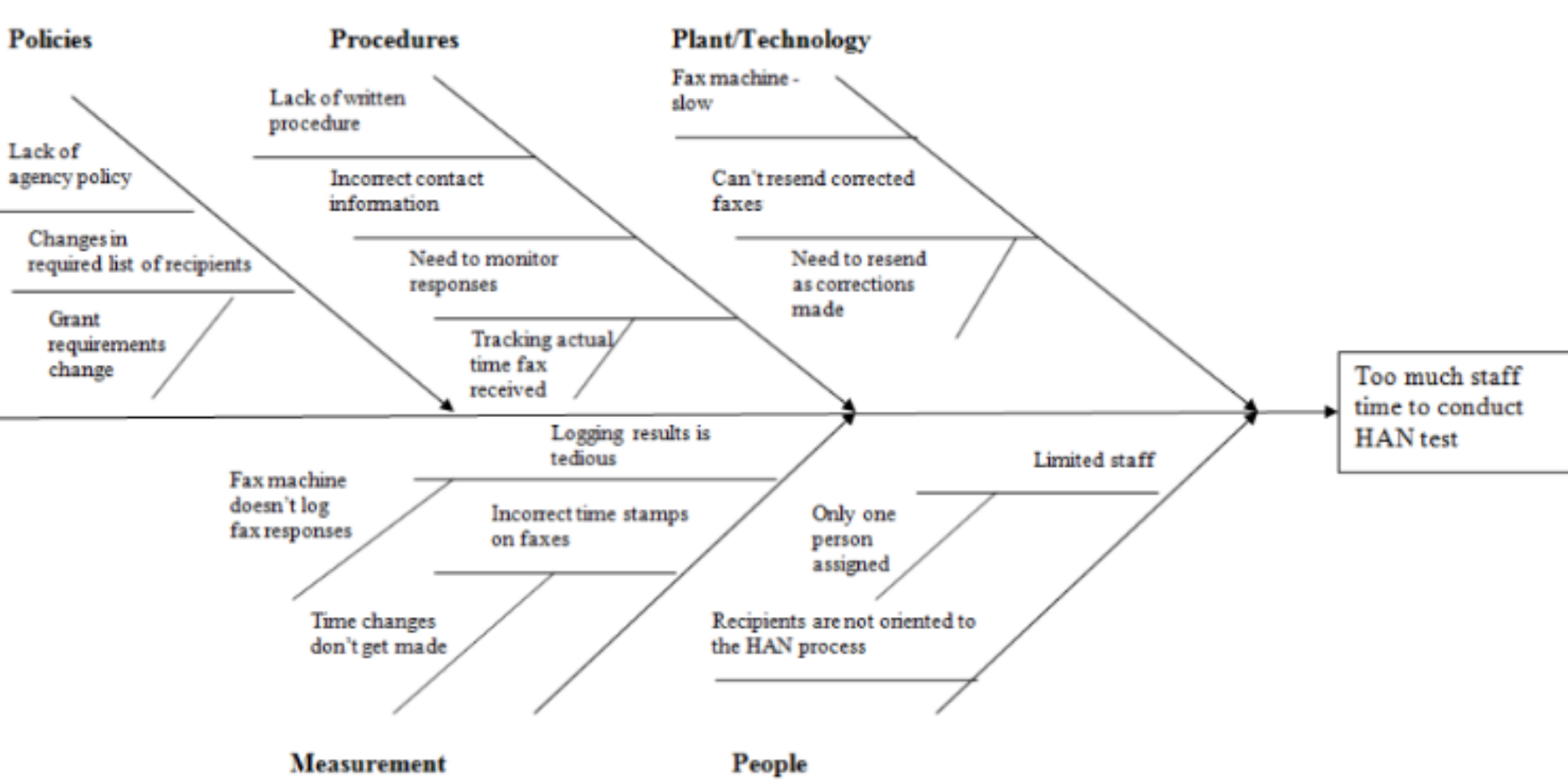2 min read
How to Perform a Root Cause Analysis of a Sentinel Event
Performance Health Partners
April 20, 2023

A Root Cause Analysis (RCA) is a systemic approach towards problem solving used to determine the root cause of a problem. (1) This process is critical in identifying strategies that can prevent harmful incidents and events within the healthcare setting. Hospitals and other types of healthcare facilities often use RCAs to investigate sentinel events.
Root Cause Analysis of a Sentinel Event
A sentinel event can be described as “an occurrence in a healthcare setting that has resulted in either death or a major loss of a body function.” (2)
Being able to identify the root cause of a sentinel event plays a major role in preventing future occurrences.
Common Types of Root Cause Analysis
There are many ways to conduct a root cause analysis in healthcare. It is important to find the method that fits best within your organization. The most common types of root cause analysis examples are:
1. 5 Whys
A simple risk management tool that is used to investigate a straightforward problem. (3) Simply ask the question “Why?” five times, which allows you to discover the root cause of the problem more clearly when you find that the answers to the “Why” questions are interrelated. (4) For example:
-
-
- Why did the patient break his hip? Answer: Because he fell.
- Why did the patient fall? Answer: Because he lost his balance.
- Why did he lose his balance? Answer: Because he had nothing to hold onto.
- Why was there nothing for him to hold onto? Answer: He was unable to use his walker.
- Why was he unable to use his walker? Answer: The walker was in the closet and not readily accessible for his use.
-
2. Fishbone
This is also known as the Cause and Effect diagram. This method of root cause analysis is a graphical tool used to map the root causes of a sentinel event (5). The fishbone diagram method helps team members visually diagram an incident, and allows them to focus on the problem instead of just the symptoms. (6)

3. Failure Mode and Effect Analysis
The Failure Mode and Effect Analysis (FMEA) tool is used to identify which parts of the problem are faulty so that they can be prevented in the future. It breaks down the number of times the failure has occurred, the actions that have been implemented by the organization, and if interventions to improve patient safety have been effective. (4)
It is important for everyone that is involved with the root cause analysis of a sentinel event to know about each step of the process to effectively prevent future errors and reduce the costs that arise from those errors. Implementing the new plan means making changes to the existing processes that are in place and making sure that those changes are carefully managed. When employees see that the changes implemented have truly been beneficial, this will encourage them to play a part in making the changes happen.
Performance Health Partner’s Solutions
Healthcare organizations often face challenges when conducting an RCA in healthcare. It is difficult to track trends or identify areas for improvement when you are keeping track of root cause analysis information in Excel or on paper. Using an incident reporting software as opposed to tracking events on paper is one way to greatly speed up the process of conducting root cause analysis of a sentinel event and get actionable results.
Performance Health Partners' incident reporting system places patients first and helps organizations drastically improve quality of care. Streamlined reporting, real-time notifications and alerts, and smart analytics empower healthcare organizations to take a data informed approach towards RCA control and prevention. To learn more, request a demo by clicking the button below.
References:
1. https://kanbanzone.com/2019/root-cause-analysis-rca/
2. https://www.jointcommissioninternational.org/-/media/deprecated-unorganized/imported-assets/jci/default-folders/news/wocher_0605_faropdf.pdf?db=web&hash=997ADB60576DCE529ECC592B03CD26E8
4. https://www.6sigma.us/gsa/
5. https://psnet.ahrq.gov/primer/root-cause-analysis
6. https://www.health.state.mn.us/communities/practice/resources/phqitoolbox/images/fishbone_ex.png


